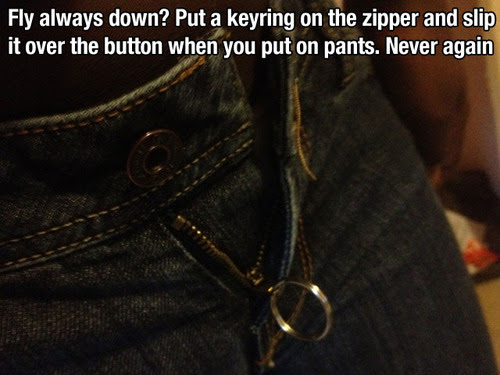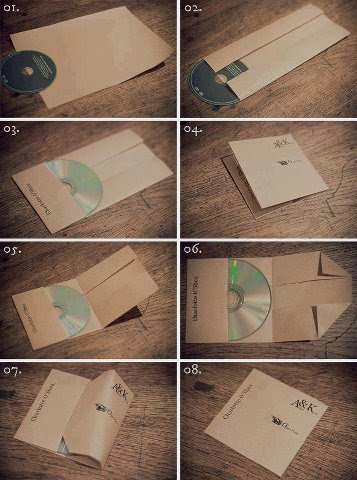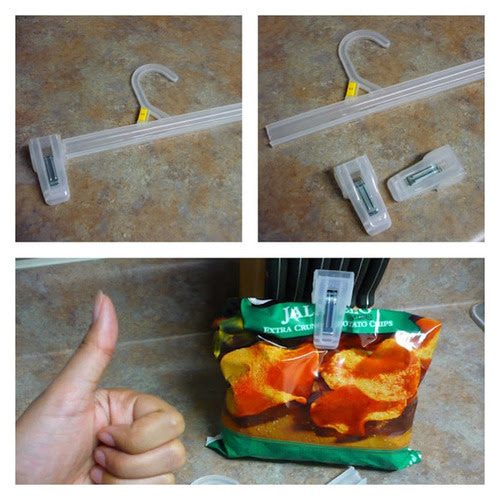Friday, December 20, 2013
Cooking Rice in Pressure cooker
My wife recently showed me that I have been cooking rice the wrong way all along. I cook rice the way I saw my mother do it, the way I guess every Indian kitchen does it: Boil rice for about 20-30 mins until done. That takes about 30 minutes of cooking time, and the cooking gas that goes with it. Sometimes I use the microwave, when I am in a hurry. I can just set the micro to cook for 20 mins and go take my bath and get ready.
But if you have a pressure cooker at home, its the easiest way to cook rice.
- Add 1 cup rice
- Add 1.5 cups water
- Pressure cook until the first whistle. Single whistle ! It takes about 3-5 mins
- Turn off the gas, let the contents cook for another 4 mins
- Strain the water off using perforated ladle/container
- Done !
I am using this trick to get my cooking done now. It takes only 3-5 minutes of gas. At least for me, the rice is perfectly cooked, there is no mess.
Off I go now…to lunch.
Tuesday, December 10, 2013
Everything You Were Afraid To Ask About “Donnie Darko”
“Darko,” 26-year-old writer-director Richard Kelly’s first film, starring Jake Gyllenhaal, Jena Malone, Drew Barrymore and Patrick Swayze, came out on October 26, 2001. In the hypersensitive aftermath of Sept. 11, the film’s distributor was understandably uncertain how to sell a film whose bizarre events are set in motion by a jet engine falling from the sky. While its critical reception included a number of rave reviews, the film died on the vine, taking in only half a million dollars in its initial release in a handful of cities.
Three years later, “Donnie Darko” is being re-released in a handsome director’s cut, with remastered sound and picture, 20 minutes of new footage and new visual effects. Years of midnight screenings at theaters around the country and the film’s impressive success on DVD — taking in more than $10 million to date in U.S. sales alone — have turned what was once a confusing and oblique failure into a confusing and oblique cult hit. With the release of Kelly’s director’s cut, an even wider audience should have a chance to be bewildered by “Donnie Darko’s” mix of ’80s teen comedy, psychological drama and science fiction.
The film, with its countdown to apocalypse, its intimations of time travel and alternate universes, and its 6-foot-tall talking bunny rabbit, lends itself easily to wildly divergent explanations. Countless Web sites devote themselves to teasing out its many mysteries. In his foreword to “The Donnie Darko Book,” the film’s star, Jake Gyllenhaal, writes, “What is ‘Donnie Darko’ about? I have no idea.” And Kelly himself mentions in the DVD commentary that “this film kinda does need Cliffs Notes.”
And so Cliffs Notes it shall have. I’ve created the definitive guide to the mystifying plot of “Donnie Darko.” Like the junior detectives of Mulholland Drive, I’ve compiled clues from all over the place: not only from repeated viewings of the original and the director’s cut, but also from the film’s Web site, Kelly’s screenplay, the DVD commentaries, published interviews with the filmmaker, Internet speculation, shower-based cogitation, and plenty of arguments with my friends. And I’m happy to say that, after all that, I more or less pretty much understand what the hell happens in “Donnie Darko.”
So if you haven’t seen “Darko” and don’t want the film spoiled, don’t read any further. (The publishers of Salon have asked me to note that instead of reading you might consider blindly flipping through the next six pages and clicking on all the ads.) While I will be including some information from the director’s cut in this explanation, very little of this is true spoiler material, as almost all the additions to the film were previously included among the movie’s DVD extras.
- – - – - – - – - – - -
We first meet Donnie Darko (Gyllenhaal) at sunrise; he’s asleep in the middle of a mountain road. He wakes up and looks out over the valley below, including his hometown, Middlesex, Va. We’re told he is a sleepwalker and never knows where he’ll wake up on any given morning.
We meet Donnie’s family: his sisters Elizabeth (Maggie Gyllenhaal, Jake’s real-life sister) and Samantha (Daveigh Chase), and his parents (Mary McDonnell and Holmes Osborne). An argument around the dinner table reveals that Donnie is on some kind of medication.
At midnight that evening, Donnie is called out of bed by a mysterious voice. He follows the voice to a local golf course, where a big talking rabbit named Frank tells him that the world will end in 28 days, 6 hours, 4 minutes and 12 seconds.
At home, Elizabeth has just returned from a night out — her date honks his horn when she safely gets through the door — when an explosion shakes the house. Donnie returns home the next morning to find his house surrounded by firetrucks and cops; while he was gone, a jet engine fell from the sky, landing directly in his bedroom. His family, relieved Donnie was spared, tells him that the FAA doesn’t know where the engine came from.
The next day at school, Donnie’s English teacher Ms. Pomeroy (Drew Barrymore) leads a discussion of Graham Greene’s short story “The Destructors.” She’s interrupted by a new student, Gretchen Ross (Jena Malone), who asks where she should sit. “Sit next to the boy you think is the cutest,” Ms. Pomeroy says, and Gretchen sits next to Donnie, as would we all.
Driving Donnie home from school, Donnie’s father almost runs over Grandma Death, a 101-year-old woman who lives in their neighborhood. Actually named Roberta Sparrow, Grandma Death spends every day walking back and forth to her mailbox, checking for a letter that never seems to come. As Donnie helps her out of the road, she whispers in his ear.
After a fruitless therapy session with Dr. Thurman (Katharine Ross), Donnie meets Frank again that night. Frank sends him to break a water main in the basement of his school; Donnie also embeds a hatchet in the bronze head of the school’s mascot. School is canceled the next day as a result of the flooding, and Donnie walks Gretchen home from her bus stop. During their conversation, Gretchen reveals that she has moved to town because her stepfather stabbed her mother. Donnie asks Gretchen to “go with” him; she accepts. “I’m really glad school was flooded today,” Donnie says, because otherwise, “you and I would have never had this conversation.”
While Donnie’s parents attend a PTA meeting a few nights later, Donnie sees Frank again, this time in his bathroom. When he tries to touch Frank, some kind of barrier seems to separate them. Frank asks him, “Do you believe in time travel?”
The school’s health teacher, Mrs. Farmer (Beth Grant), seems to be teaching a curriculum derived entirely from a series of cheesy self-help videos hosted by Jim Cunningham (Patrick Swayze). An attempt to get Donnie to play along causes him to erupt in class; he is suspended from after-school activities for six months.
A few days later, Donnie asks his science teacher, Dr. Monnitoff (Noah Wyle), if he knows anything about time travel. Monnitoff responds enthusiastically; for time travel to occur, you’d need some kind of metal vessel, he says, and a time-space wormhole. He lends Donnie a copy of “The Philosophy of Time Travel,” a book written by none other than Grandma Death herself, back when she was a science teacher at Donnie’s school.
In therapy, Donnie reveals what Grandma Death whispered to him: “Every living creature on earth dies alone.” He confesses to Dr. Thurman how afraid he is of being alone, and of dying alone.
Watching a Redskins game soon afterward, Donnie is surprised to see, protruding from his father’s stomach, a silvery, aqueous blob. The blob stretches out and precedes his father as he gets up to go to the fridge; it looks like a liquid snake and seems to be a visible manifestation of his father’s future. Donnie sees his own future flowing out of his stomach; he follows the iridescent snake up the stairs to his parents’ room, where he finds a handgun hidden in a closet.
While discussing a class project, Donnie and Gretchen come close to kissing, only to be interrupted when they notice a fat guy in a tracksuit smoking a cigarette and watching them.
Late at night, Donnie sees Frank in his bathroom again. Using a kitchen knife, he taps on the liquidy barrier between them; Frank’s right eye flashes as the point of the knife hits the barrier.
Jim Cunningham brings his self-help shtick to a school assembly. Donnie acts up again, demanding to know how much Cunningham is being paid to visit the school and calling him the Antichrist. He is hustled out of the auditorium.
Donnie shows Gretchen “The Philosophy of Time Travel.” “I’ve been seeing stuff,” he says, and the book describes the visions he’s been having. “It can’t be a coincidence,” he adds. Donnie and Gretchen try to visit Roberta Sparrow, but she doesn’t answer her door. Donnie looks in her mailbox. It’s empty.
Donnie finds Jim Cunningham’s wallet on the sidewalk. “Now you know where he lives,” we hear Frank’s voice say.
Having kissed for the first time, Gretchen and Donnie go to a movie, Sam Raimi’s “The Evil Dead.” Gretchen falls asleep instantly and Donnie sees Frank sitting near them. Donnie asks Frank to take off his bunny suit; Frank removes his mask and reveals himself to be a normal-looking kid with a mutilated right eye. The movie on the screen is replaced by a picture of Jim Cunningham’s house. “Burn it to the ground,” Frank says.
Meanwhile, Donnie’s family is at the school’s talent show, where his little sister Samantha’s dance troupe, Sparkle Motion (coached by Mrs. Farmer), is performing. They are watched by an enthusiastic crowd and a mysterious woman with a clipboard. (Donnie, having been banned from after-school activities, was not allowed to attend.) As Sparkle Motion performs, we see Donnie torch Jim Cunningham’s house. Firefighters discover a kiddie porn dungeon in the ruins of Cunningham’s mansion; he is arrested the next day.
A distraught Mrs. Farmer visits Donnie’s mom. Sparkle Motion has been invited to perform on “Star Search ’88,” but Mrs. Farmer has to attend Cunningham’s arraignment and cannot chaperone. Donnie’s mother agrees to fly to Los Angeles with the girls for the taping.
We see Donnie holding a letter addressed to Roberta Sparrow.
Donnie visits Ms. Pomeroy, who has been fired. She has written the words “cellar door” on her blackboard and tells him that a “famous linguist” declared them the most beautiful words in the English language.
In therapy, a hypnotized Donnie sees Frank again. He freaks out. When he comes to, Dr. Thurman tells Donnie that his pills are placebos.
With both their parents out of town, Donnie and Elizabeth decide to throw a party. The house fills with costumed high-schoolers dancing to Joy Division. Gretchen appears at the door, crying; her mom has disappeared and she’s afraid her stepfather has found them. Donnie and Gretchen go upstairs. Bow chicka bow chicka bow chicka bow. While they’re doin’ it, Donnie’s mom calls and tells the answering machine that she and Samantha will be returning on the red-eye. Downstairs, Elizabeth asks a friend if they’ve seen Frank.
It’s midnight. A title card tells us that “six hours remain.”
Donnie and Gretchen return downstairs. Donnie sees the future blobs protruding from partygoers’ stomachs; he follows his own to the kitchen, where written on the dry-erase board is “Frank was here Went to get BEER.” Gretchen’s future blob approaches Donnie; he falls to his knees, looks inside it and sees a tunnel of water racing through clouds. He and Gretchen leave the party and ride their bikes, “E.T.”-style, to Roberta Sparrow’s house.
Once there, they climb through Grandma Death’s cellar door; two thugs from their school attack them and force them outside at knifepoint. As they struggle in Grandma Death’s dusty front yard, we see approaching headlights in the distance. One of the thugs throws Gretchen to the ground. “Deus ex machina,” Donnie says as the car approaches.
The red Trans Am’s headlights illuminate Roberta Sparrow, who is standing in the middle of the road reading Donnie’s letter. The car swerves to avoid her and runs over Gretchen, killing her. The thugs run away while Donnie races to Gretchen’s side. Two guys step out of the car: a guy in a clown costume and Frank, dressed in his rabbit suit, his mask off. “Is she dead?” a terrified Frank asks. He seems to have never met Donnie before. Donnie shoots him through the right eye.
Roberta Sparrow approaches Donnie. “The storm is coming,” she says. “You must hurry.”
It’s the early morning. Donnie carries Gretchen’s body back to the house, loads her in the car and looks up at the eerie black cloud hovering over the house. He drives to the mountains where he began the film and sits on his car’s hood. We hear Frank’s voice say, “I’m going home.” In the distance, a black funnel cloud hangs over Middlesex; a tiny plane flies toward the cloud. Donnie stares at the horizon.
We see Donnie’s mom and sister on the plane; there is an explosion and the passengers begin to scream. The jet engine falls through a tunnel in the clouds. We hear Gretchen’s voice repeating something she said earlier in the film: “What if you could go back in time and take those hours of pain and darkness and replace them with something better?” We see pixilated representations of the events of the past 28 days, running in reverse. Time flows backward while we hear Donnie’s letter to Roberta Sparrow. “I can only hope the answers will come to me in my dreams,” he says.
We see Donnie in his bedroom, laughing. It’s Oct. 2 again, a little after midnight. Elizabeth comes through the front door and her date honks his horn outside. Donnie is lying in bed when the jet engine crashes through his room.
Dr. Thurman wakes up gasping. Ms. Pomeroy and Dr. Monnitoff are in bed together; he is awake, staring at the ceiling. Jim Cunningham weeps in his bed. Mrs. Farmer looks aghast. Amid drawings and models of rabbit masks, Frank stares moodily into space.
The next morning, Gretchen rides her bike past the Darko house. A truck carts off the smoking engine. She asks a neighborhood kid what happened and he tells her a boy named Donnie Darko died. Donnie’s mother is standing in the front yard amid her weeping family, smoking a cigarette. Gretchen cautiously waves; Donnie’s mom waves back. The boy waves too.
- – - – - – - – - – - -
What the hell just happened?
The vast majority of “Donnie Darko” takes place in a parallel universe. From the moment the clock in the Darko house strikes midnight, 10 minutes into the film, right up to Donnie’s hysterical laughter in bed, the setting of the film is Tangent Middlesex, a parallel dimension, spontaneously created, which exists only during the 28 days that cover the majority of the film’s action. The through-line of the film is Donnie Darko’s quest to erase the Tangent Universe before it destroys the world.
To understand what actually occurs in “Donnie Darko,” it helps to have read “The Philosophy of Time Travel,” by Roberta Sparrow. This is difficult in that the book is an imaginary one, written by a fictional character. Luckily, much of the book’s text is included on the film’s Web site and DVD and is now incorporated into the director’s cut.
“The Philosophy of Time Travel” explains that time, while usually stable, will occasionally become corrupted for reasons unknown to all. When this happens, a Tangent Universe is created — an alternate reality parallel to the primary universe in which we all live. “If a Tangent Universe occurs,” Sparrow writes, “it will be highly unstable, sustaining itself for no longer than several weeks. Eventually it will collapse upon itself, forming a black hole within the Primary Universe capable of destroying all existence.” During that collapse, a time-space vortex will form that leads back to the birth of the Tangent Universe.
In a nutshell, this is precisely what the hell happens in “Donnie Darko.” At midnight on Oct. 2, 1988, a Tangent Universe is spontaneously created, centered in Middlesex, Va. This Tangent Universe threatens the existence of life as we know it; it falls to one person to do whatever necessary to put the world back in order and keep the Tangent Universe from destroying the real world when it collapses in 28 days. That person — that superhero — is, of course, Donnie Darko: a 16-year-old with emotional problems, a history of arson, and bedroom eyes.
The Artifact
Hand in hand with the creation of a Tangent Universe, writes Roberta Sparrow, is the spontaneous appearance of an Artifact. Made out of metal, this artifact will inexplicably show up near the epicenter of the Tangent Universe; in order for disaster to be averted, the Artifact must be sent through the time vortex back to the Primary Universe — back to before the split in dimensions occurred. The Artifact in Tangent Middlesex, of course, is a gigantic freaking jet engine that falls out of the sky.
The Living Receiver
That’s Donnie, in the words of “The Philosophy of Time Travel”: the Living Receiver. He’s the chosen one, picked (seemingly at random) to return the Artifact to the Primary Universe in order to avert catastrophe. Being the Living Receiver has advantages and disadvantages: You get superpowers, like strength, telekinesis and the ability to see into the future, but you also get horrifying hallucinations and the people around you tend to fear and attack you.
The Manipulated
This refers to pretty much everyone else in the movie. “They are prone to irrational, bizarre and often violent behavior,” writes Roberta Sparrow, because their entire raison d’être is to help the Chosen One fulfill his task. Which is to say that every other character in the movie has been set up like a piece on a chessboard, ready to behave in the exact perfect way necessary to push Donnie toward his eventual destiny — returning that jet engine to its proper time and place in the Primary Universe. Nearly every event in the film, when viewed in this way, has a specific purpose; together the events create an inexorable chain of coincidence and consequence designed to make Donnie’s fate inescapable.
All this mumbo-jumbo, of course, skirts the big question: Chosen by whom? Manipulated by whom? The movie leaves that ambiguous, but it seems clear from comments Kelly makes during the DVD commentary that the person in charge here is, basically, God. When the Middlesex Tangent Universe is spontaneously created, God arranges the people in that Tangent Universe around Donnie Darko in such a manner that their actions lead inevitably to Donnie’s delivering the jet engine back through time.
Deep breath.
Questions?
- – - – - – - – - – - -
Yeah, how the hell am I supposed to know all this? Hardly any of that stuff was in the movie.
That’s true. Many of my friends complain that to understand “Donnie Darko,” a viewer needs to watch the movie and listen to the DVD commentary and crack the Web site. In an interview, Kelly has said that he created the pages from “The Philosophy of Time Travel” as an exercise in interpretation and that they are not intended to be read as canon; nonetheless, his inclusion of many book excerpts in his director’s cut suggests that his feelings on the matter have changed and he intends them to be definitive. (Incidentally, this might be the first time that a director’s cut includes large chunks of material lifted directly from the film’s Web site.)
Couldn’t you interpret this whole movie in another way, without any sci-fi stuff at all? As sort of a subjective rendition of Donnie’s descent into paranoid schizophrenia?
Absolutely. A number of my friends read the film this way and feel it is a far more interesting interpretation of the events of “Donnie Darko” than the dominant sci-fi narrative. Certainly aspects of the film — the flatness of affect in Donnie’s meetings with Frank, Donnie’s increasing menace and the way the mechanics of the plot revolve so explicitly around typical teenage sexual hang-ups — support a reading of the film as Donnie’s Descent, shown from inside his head. Even the careful tying-together of the plot doesn’t necessarily negate this read; one trait of the budding schizophrenic is the creation of coherent, if unlikely, narratives tying together the hallucinations and paranoia often manifested as part of the illness.
That said, I’m not dealing too much with this read in these Cliffs Notes because it seems to me that through his supplementary materials and his director’s cut, Richard Kelly is pushing viewers to accept the primary narrative — the sci-fi, Tangent Universe narrative — as the “proper” way to interpret the film. We can argue all day about whether Kelly’s decision is clarifying or foolishly reductive. Many of my friends think that the film is far richer as an exploration of madness than as an “Escher thriller about freaking wormhole bullshit,” as one friend so succinctly put it. Conversely, I myself am much more interested in watching a clever sci-fi flick with good ’80s tunes than another inside-the-nutcase’s-head movie, and so I’m perfectly happy to have Kelly attempt to clarify the intentions of his plot a bit. Kelly himself has spent years crowing about his film’s careful ambiguity, so I’m interested in why he made the additions he did to the director’s cut, additions that serve primarily to make the film far less ambiguous.
I still think that my interpretation is valid, man.
Of course it’s valid. Don’t take it personally. We’re all relativists here.
What’s with the 6-foot-tall rabbit?
Well, that’s as good a place to start as any. Frank (played, in fur coat and out, by James Duval) is the boyfriend of Donnie’s sister Elizabeth. (It’s he who drops her off just before the jet engine fiasco.) Frank himself never meets Donnie until their fateful encounter on Halloween eve. The Frank who speaks to Donnie on the golf course and elsewhere is a kind of ghost Frank — a remnant of Frank who, because Donnie shoots him in the eye within the Tangent Universe’s 28 days, can move freely in time throughout the Tangent Universe. Frank’s purpose — for he’s been chosen, as surely as Donnie has — is to serve as Donnie’s guide through the Tangent Universe, leading him toward clues and offering tasks that will smooth Donnie’s way toward his goal.
According to Roberta Sparrow’s book, Frank is an example of the Manipulated Dead. Apparently, those who die within the confines of the Tangent Universe are given some level of knowledge of the catastrophe to come and serve to some extent as the Chosen One’s guide. There seems to be some variation in the level of understanding given to the Manipulated Dead; Gretchen, for example, the other Manipulated Dead, seems to have an inkling that something terrible is going to happen but clearly doesn’t have the detailed comprehension Frank does. Nor does Gretchen’s spirit appear to Donnie behind any kind of watery barrier. Nor does she dress up in a bunny suit.
Yeah, what’s up with that bunny suit?
Donnie meets the real Frank — not his Manipulated Dead specter — for the first time on Halloween eve, with Frank in costume. But it’s also an allusion to “Alice’s Adventures in Wonderland” — just as the White Rabbit leads Alice down the hole into her great adventure, so does Frank lead Donnie into his own. Rabbit imagery abounds in “Donnie Darko,” from a VW Rabbit driving down the streets of Middlesex to stuffed bunnies to a photograph of toddler Maggie Gyllenhaal next to a kid in a rabbit suit to (in the director’s cut) an extended subplot revolving around Richard Adams’ rabbits-in-peril novel “Watership Down.”
OK, I still don’t get it. How exactly does Donnie deliver the jet engine back through time? I get that there’s a time portal or whatever above his house, and the jet engine falls through it, but it seems like it just falls off his mom’s plane for no reason.
I couldn’t figure this out at all, but, thank God, Kelly explains it on the DVD commentary. In addition to his super strength and super future-sight and super sulking power, Donnie has the power of telekinesis. He rips the engine off the plane himself.
Oh. I didn’t get that.
I don’t know anyone who did.
Why does he do that?
Well, he’s basically railroaded into it. Previous events — his conversations with Dr. Monnitoff, his reading of Roberta Sparrow’s book — have made it clear to Donnie what is going on, and he pretty much knows what he is supposed to do. But he’s spurred on most directly by the events of the previous evening. Once he has killed a person and seen his girlfriend die before his eyes, he feels he has no choice but to send time backward — to telekinetically rip off the engine, send it through the time vortex, and fulfill his destiny as the Living Receiver. (Sparrow’s book refers to this as an Ensurance Trap, a snare created by the Manipulated Dead — in this case, Frank and Gretchen — to make absolutely sure that the Chosen One does his job.) Donnie believes that if he does what he’s supposed to, this Tangent Universe he’s in will disappear and it will be as if the past 28 days never happened — Gretchen and Frank will still be alive.
But doesn’t he know that if he sends the jet engine back in time, and it lands on his house, but he’s back there on Oct. 2 in a regular universe with no Frank calling him out of bed, he’ll get squashed like a bug?
Impaled, actually, as seen in a gruesome deleted scene on the DVD. It’s hard to tell whether he knows this or not. His hysterical laughter at the end of the movie suggests he knows something’s up. Sparrow’s book notes that many of the Manipulated will see the events of the Tangent Universe in their dreams. So we can assume that at midnight on Oct. 2 in the Primary Universe, Donnie Darko wakes up from an exceptionally detailed dream in which he developed superpowers, got lucky, burned down a pervert’s house, and discussed the sexual habits of Smurfs with his friends. Whether he understands the dream is uncertain; I think he does but chooses, due to all he’s seen and his worries about repeating the mistakes of the Tangent Universe, to stay in bed and take a jet engine right in the kisser.
Interestingly, Kelly suggests in the DVD commentary that the car horn we hear as Elizabeth comes in the door is Frank’s — that he’s honking not as a message to Elizabeth, but as one to Donnie. Perhaps Frank at that second realizes everything that happened in the Tangent Universe, and knows what is about to happen, and attempts to wake Donnie up and get him out of bed before the sky falls?
Also interestingly, this means that once again an extremely complicated film can be basically explained as being a representation of the dream a troubled character has just before death.
People remember the Tangent Universe in dreams? Is that why we saw everyone looking sad in bed?
Yeah. And Jim Cunningham is crying because he realized what a total perv he is. According to the film’s Web site, he shoots himself 10 days later. The Web site has all kinds of fun tidbits: The FAA never figures out where the engine came from. Roberta Sparrow finally dies in December 1988. And Dr. Monnitoff marries Ms. Pomeroy; when he dies under suspicious circumstances in 1999, she sends his copy of “The Philosophy of Time Travel” to the Library of Congress with a cryptic note. Check it out, but be warned it’s one of those annoying mysterious Web sites that take a week to figure out; look here for a step-by-step walkthrough.
The sexual habits of Smurfs?
Yeah! Apparently Smurfs lack genitalia. According to the DVD commentary, the estate of Peyo, creator of the Smurfs, allowed Kelly to keep this very funny scene in the movie because Donnie’s description of Smurf sexuality is perfectly accurate.
So how are all the Manipulated manipulated?
The Manipulated do irrational or unexpected things with consequences that inevitably push Donnie toward his fate. Consider the film’s climax, the deaths of Gretchen and Frank. It’s fascinating to see all the choices by various Manipulated that get Donnie outside Grandma Death’s house on that fateful night — and cause him to be so devastated by the deaths of Frank and Gretchen that he is willing to destroy the universe in which he finds himself just to undo those deaths.
How does Donnie meet Gretchen? Well, on Gretchen’s first day of school, Ms. Pomeroy behaves strangely, giving Gretchen that not-approved-by-the-Board-of-Ed directive to sit next to the boy she finds the cutest. And then Frank helps them become better acquainted by getting Donnie to break that water main. Remember? “I’m really glad school was flooded today,” Donnie says, because otherwise, “you and I would have never had this conversation.”
How does Donnie know to communicate with Roberta Sparrow? Dr. Monnitoff talks time travel with him and gives him a not-approved-by-the-Board-of-Ed book to read.
How does Donnie know to look in Grandma Death’s cellar? Ms. Pomeroy’s out-of-left-field invocation of the phrase “cellar door.”
The two thugs’ weird idea to rob Grandma Death sends Donnie and Gretchen into the road. Mrs. Sparrow — who’d refused to answer the door when Donnie previously called on her — is reading Donnie’s letter when Frank’s Trans Am swerves around her and runs over Gretchen.
Why does Donnie love Gretchen so much that he’s willing to shoot Frank in retaliation, willing to erase the universe to bring her back to life? Well, because of their deep emotional connection, sure, but also because they just made love for the first time. And why do they make love? Gretchen’s stepdad, we’re led to believe, irrationally attacks Gretchen’s mother, leading Gretchen tearfully to Donnie’s door and into his arms.
And why is Frank there at all? Because he left a party where he could’ve been making out with Maggie Gyllenhaal in order to buy beer, even though the party already had a keg. The behavior of an 18-year-old guy doesn’t get much more irrational than that.
What other irrational behavior do the Manipulated exhibit?
Well, Donnie gets driven to his misbehavior by Mrs. Farmer’s moronic adherence to the cult of Swayze. Said misbehavior gets him suspended from after-school activities; that’s why he can’t attend the talent show and is instead free to torch Cunningham’s house. Once Cunningham is exposed as a panderer, Mrs. Farmer can’t go to L.A. with the Sparkle Motion girls, so Donnie’s mom goes, so the house is devoid of parents, so the Gyllenhaals can throw a bitchin’ party where Donnie gets laid. And since Donnie’s mom had to go to L.A., she’s on the plane when the engine comes off, and … um … actually, I still have no idea why she had to be on that particular plane. That makes no sense at all.
Oh, and of course, everyone thought Sam Raimi was crazy when he made “The Evil Dead,” but he irrationally did it anyway, and that movie was Donnie’s and Gretchen’s only date.
Thanks, jackass. Who are the fat guy in the tracksuit and the mysterious woman with the clipboard?
He’s one of the FAA employees we see near the beginning and end of the movie. Apparently the FAA is so freaked out by the jet engine weirdness that they’ve sent their tackiest agent to keep an eye on the Darko family.
She is a talent scout for Ed McMahon’s “Star Search ’88.”
What does it mean that Donnie’s medication is a placebo?
This scene, which appears in the director’s cut, is another hint from Kelly that he doesn’t think Donnie’s crazy. Dr. Thurman doesn’t fully understand what’s going on, but like so many of the other characters, she recognizes that something momentous is in the air and that Donnie seems to be in the middle of it, whatever it is.
What’s the story with “cellar door”?
Ms. Pomeroy’s vague attribution of the quote to a “famous linguist” was, I assume, mandated by the legal department; it’s hard to get a handle on who first claimed those two words to be the most beautiful in the English language. I’ve seen it attributed to Pound, Poe, Tolkien, Mencken and a Chinese student of Mencken’s who knew no English.
What does that creepy thing Grandma Death whispers have to do with anything?
I think it’s telling how scared Donnie seems when he discusses her notion that “every living creature on earth dies alone.” As the Tangent Universe draws to a close, Kelly is careful to give Donnie moments of reconciliation with nearly everyone important to him: his mother (in a sweet scene up in his room), his father (in a director’s cut scene in the backyard, one of the nicest additions to the new version) and Gretchen (during the Halloween party). A friend of mine pointed out that another way of interpreting Donnie’s smile as he settles into bed, just before he gets engined, is that he is pleased about the circumstances of his onrushing death. He was afraid of dying alone, without a connection to God or anyone? Well, following “God’s channel,” he has known love for the first time and has been given a chance to sacrifice himself for the love of Gretchen and his family and everyone. He knows he is about to die, but he doesn’t feel at all alone.
What’s with those weird blobs leading out of everyone’s stomachs?
They’re a visual representation of the future, inspired, Kelly said, by watching John Madden operate the CBS Chalkboard Telestrator on NFL broadcasts. Included among Donnie’s many superpowers is the power to see the future. Donnie and Dr. Monnitoff have a discussion in which Donnie asks whether this representation suggests there’s no such thing as free will. Dr. Monnitoff says that just because you see your future doesn’t mean you have to follow it, but Donnie seems to believe that the future blobs represent “God’s channel.”
The film comes down pretty firmly against the concept of free will, at least in Tangent Universes. But that leads to a daunting question…
Why all the rigmarole? If no one in this Tangent Universe has free will — and if God or whoever can make them act irrationally and do whatever He wants — why did this whole scheme to get the jet engine off the plane have to be so complicated? It seems like a stupid way to save the universe, in the sense that anything could have gone wrong at any step. Why couldn’t Whoever was in charge just make Donnie sleepwalk into the hills on Oct. 30 and use his superpowers to knock the engine off the plane? In the whole scale of things, that doesn’t seem more irrational than some of the other irrational things characters do throughout this movie.
That’s the exact daunting question to which I referred. It all seems very baroque, doesn’t it, reminiscent of the overcomplicated plans hatched by villains in potboilers since the beginning of time. (My wife asks: If Voldemort needs Harry’s blood so bad, why do they have to rig the entire freaking Triwizard Tournament to get it? Why couldn’t Fake Mad-Eye just, like, send Harry to the infirmary for a Magical Mumps blood test?)
There’s no good answer to this question — why does God or Whoever make saving the universe so complicated? — other than the obvious one. If saving the universe was as easy as all that, what a boring movie that would make, right?
The Origin of 0 index arrays
Sometimes somebody says something to me, like a whisper of a hint of an echo of something half-forgotten, and it lands on me like an invocation. The mania sets in, and it isn’t enough to believe; I have to know.
I’ve spent far more effort than is sensible this month crawling down a rabbit hole disguised, as they often are, as a straightforward question: why do programmers start counting at zero?
Now: stop right there. By now your peripheral vision should have convinced you that this is a long article, and I’m not here to waste your time. But if you’re gearing up to tell me about efficient pointer arithmetic or binary addition or something, you’re wrong. You don’t think you’re wrong and that’s part of a much larger problem, but you’re still wrong.
For some backstory, on the off chance anyone still reading by this paragraph isn’t an IT professional of some stripe: most computer languages including C/C++, Perl, Python, some (but not all!) versions of Lisp, many others – are “zero-origin” or “zero-indexed”. That is to say, in an array A with 8 elements in it, the first element is A[0], and the last is A[7]. This isn’t universally true, though, and other languages from the same (and earlier!) eras are sometimes one-indexed, going from A[1] to A[8].
While it’s a relatively rare practice in modern languages, one-origin arrays certainly aren’t dead; there’s a lot of blood pumping through Lua these days, not to mention MATLAB, Mathematica and a handful of others. If you’re feeling particularly adventurous Haskell apparently lets you pick your poison at startup, and in what has to be the most lunatic thing I’ve seen on a piece of silicon since I found out the MIPS architecture had runtime-mutable endianness, Visual Basic (up to v6.0) featured the OPTION BASE flag, letting you flip that coin on a per-module basis. Zero- and one-origin arrays in different corners of the same program! It’s just software, why not?
All that is to say that starting at 1 is not an unreasonable position at all; to a typical human thinking about the zeroth element of an array doesn’t make any more sense than trying to catch the zeroth bus that comes by, but we’ve clearly ended up here somehow. So what’s the story there?
The usual arguments involving pointer arithmetic and incrementing by sizeof(struct) and so forth describe features that are nice enough once you’ve got the hang of them, but they’re also post-facto justifications. This is obvious if you take the most cursory look at the history of programming languages; C inherited its array semantics from B, which inherited them in turn from BCPL, and though BCPL arrays are zero-origin, the language doesn’t support pointer arithmetic, much less data structures. On top of that other languages that antedate BCPL and C aren’t zero-indexed. Algol 60 uses one-indexed arrays, and arrays in Fortran are arbitrarily indexed – they’re just a range from X to Y, and X and Y don’t even need to be positive integers.
So by the early 1960′s, there are three different approaches to the data structure we now call an array.
- Zero-indexed, in which the array index carries no particular semantics beyond its implementation in machine code.
- One-indexed, identical to the matrix notation people have been using for quite some time. It comes at the cost of a CPU instruction to manage the offset; usability isn’t free.
- Arbitrary indices, in which the range is significant with regards to the problem you’re up against.
So if your answer started with “because in C…”, you’ve been repeating a good story you heard one time, without ever asking yourself if it’s true. It’s not about*i = a + n*sizeof(x) because pointers and structs didn’t exist. And that’s the most coherent argument I can find; there are dozens of other arguments for zero-indexing involving “natural numbers” or “elegance” or some other unresearched hippie voodoo nonsense that are either wrong or too dumb to rise to the level of wrong.
The fact of it is this: before pointers, structs, C and Unix existed, at a time when other languages with a lot of resources and (by the standard of the day) user populations behind them were one- or arbitrarily-indexed, somebody decided that the right thing was for arrays to start at zero.
So I found that person and asked him.
His name is Dr. Martin Richards; he’s the creator of BCPL, now almost 7 years into retirement; you’ve probably heard of one of his doctoral students Eben Upton, creator of the Raspberry Pi. I emailed him to ask why he decided to start counting arrays from zero, way back then. He replied that…
As for BCPL and C subscripts starting at zero. BCPL was essentially designed as typeless language close to machine code. Just as in machine code registers are typically all the same size and contain values that represent almost anything, such as integers, machine addresses, truth values, characters, etc. BCPL has typeless variables just like machine registers capable of representing anything. If a BCPL variable represents a pointer, it points to one or more consecutive words of memory. These words are the same size as BCPL variables. Just as machine code allows address arithmetic so does BCPL, so if p is a pointer p+1 is a pointer to the next word after the one p points to. Naturally p+0 has the same value as p. The monodic indirection operator ! takes a pointer as it’s argument and returns the contents of the word pointed to. If v is a pointer !(v+I) will access the word pointed to by v+I. As I varies from zero upwards we access consecutive locations starting at the one pointed to by v when I is zero. The dyadic version of ! is defined so that v!i = !(v+I). v!i behaves like a subscripted expression with v being a one dimensional array and I being an integer subscript. It is entirely natural for the first element of the array to have subscript zero. C copied BCPL’s approach using * for monodic ! and [ ] for array subscription. Note that, in BCPL v!5 = !(v+5) = !(5+v) = 5!v. The same happens in C, v[5] = 5[v]. I can see no sensible reason why the first element of a BCPL array should have subscript one. Note that 5!v is rather like a field selector accessing a field in a structure pointed to by v.
This is interesting for a number of reasons, though I’ll leave their enumeration to your discretion. The one that I find most striking, though, is that this is the earliest example I can find of the understanding that a programming language is a user interface, and that there are difficult, subtle tradeoffs to make between resources and usability. Remember, all this was at a time when everything about the future of human-computer interaction was up in the air, from the shape of the keyboard and the glyphs on the switches and keycaps right down to how the ones and zeros were manifested in paper ribbon and bare metal; this note by the late Dennis Ritchie might give you a taste of the situation, where he mentions that five years later one of the primary reasons they went with C’s square-bracket array notation was that it was getting steadily easier to reliably find square brackets on the world’s keyboards.
“Now just a second, Hoye”, I can hear you muttering. “I’ve looked at the BCPL manual and read Dr. Richards’ explanation and you’re not fooling anyone. That looks a lot like the efficient-pointer-arithmetic argument you were frothing about, except with exclamation points.” And you’d be very close to right. That’s exactly what it is – the distinction is where those efficiencies take place, and why.
BCPL was first compiled on an IBM 7094 – here’s a picture of the console, though the entire computer took up a large room – running CTSS – theCompatible Time Sharing System – that antedates Unix much as BCPL antedates C. There’s no malloc() in that context, because there’s nobody to share the memory core with. You get the entire machine and the clock starts ticking, and when your wall-clock time block runs out that’s it. But here’s the thing: in that context none of the offset-calculations we’re supposedly economizing are calculated at execution time. All that work is done ahead of time by the compiler.
You read that right. That sheet-metal, “wibble-wibble-wibble” noise your brain is making is exactly the right reaction.
Whatever justifications or advantages came along later – and it’s true, you do save a few processor cycles here and there and that’s nice – the reason we started using zero-indexed arrays was because it shaved a couple of processor cycles off of a program’s compilation time. Not execution time; compile time.
































































































